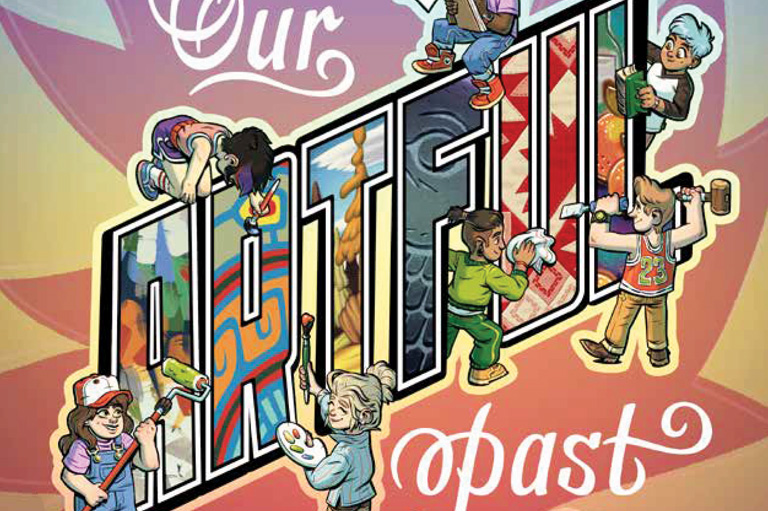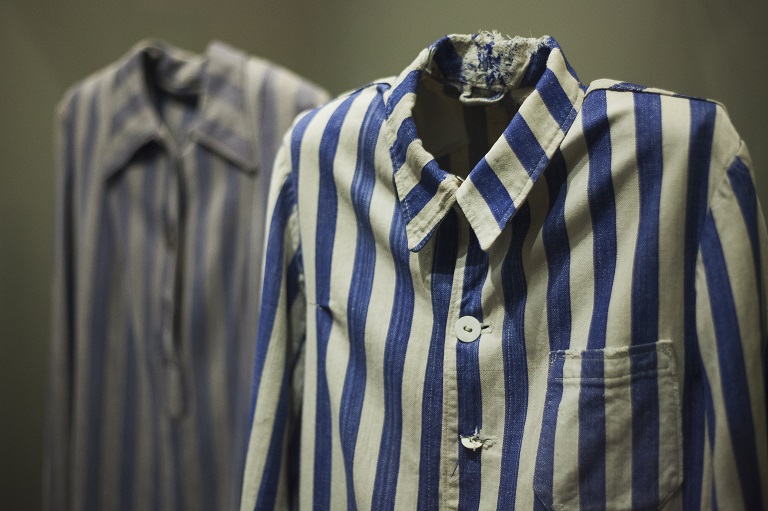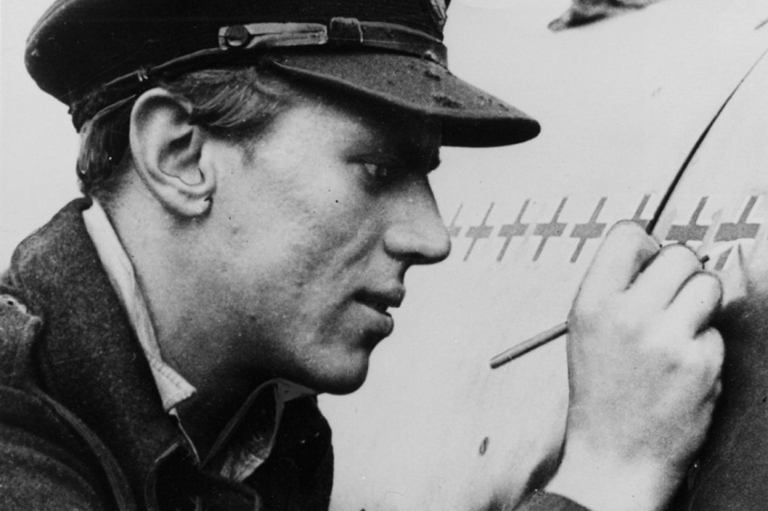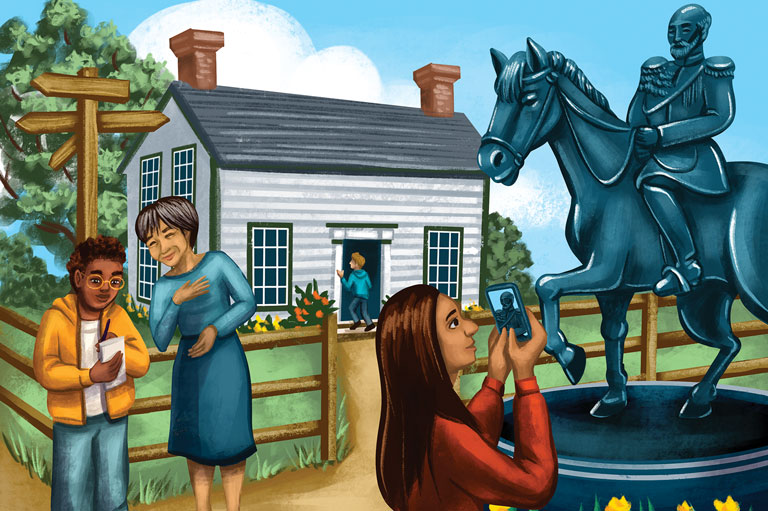Lost Art and Found History: The Life of Max Stern
Grade Levels: 3/4, 5/6, 7/8
Subject Area: Social Studies, History, Art History, ELA
This lesson is inspired by the article “Stolen Beauty” in the December 2018 issue of Kayak: Canada’s History Magazine for Kids.
Lesson Overview
This lesson examines the life and art of Max Stern, touching upon the themes of the persecution of Jews in Nazi Germany and the resettlement of Jewish immigrants in Canada following the Second World War. Extension activities include an exploration of Canadian artists featured in Stern’s gallery in Montreal, as well as prejudices encountered by groups of immigrants in Canada.
Time Required
4-5 lessons
Historical Thinking Concept(s)
- Establish historical significance
- Use primary source evidence
- Analyze cause and consequence
- Understand the ethical dimension of historical interpretations
Learning Outcomes
Students will:
- Inquire: using paintings as a primary source, students will further analyze material related to the life of Max Stern
- Collect: collect historical data from a comic while drawing conclusions and reflecting on the meaning and impact of this historical data
- Analyze: using multiple documents such as paintings, comics, and historical quotations, students will gather historical data about Max Stern and the lives of Jewish refugees in the Second World War
- Understand: demonstrate an understanding of the impact of the Nazi regime on people’s lives and discuss how this affected people’s rights, responsibilities, and decision making before and after the Second World War
- Communicate and Apply: summarize the life of Max Stern in point form and explore Historical Thinking Concepts through analysis of his life story
Background Information
Nazis and Art Plundering
Starting in 1933, the Nazi Party of Germany systematically stole all personal belonging from Jews including gold, silver, religious treasures, books, and ceramics. Included in these items were paintings. Works of art not stored by the Nazis in key locations in Paris and Munich were burned because they were deemed “rubbish” or “degenerate” by the Nazis. Other works of art were sold in public auctions and private sales. It is estimated that the Nazis stole 600,000 works of art in Europe. As of 2020, 100,000 works are still unaccounted for.
Max Stern and His Gallery
One family who suffered at the hands of the Nazis was the Sterns; Max Stern owned an art auction house in Dusseldorf, Germany in the 1930s. By 1933, the Stern gallery was forbidden to hold auctions, and in 1935 Stern was forbidden to practice art dealership and was given three months to sell his artwork or dissolve his business. Despite legal appeals by Stern, Stern ceased to become an authorized art dealer in 1937, and he fled Germany to London with only a suitcase in his hand. His gallery contents and private collection were auctioned off by the Nazis.
Max Stern Escapes Germany
For two years, Stern was interned as an enemy alien in a refugee camp on the Isle of Man. He then emigrated to Canada where he spent another two years in internment camps in New Brunswick and Quebec. Finally, after finding a sponsor to exempt him from refugee status, Stern drew upon his academic and art dealing background and was named the director of the Dominion Gallery of Fine Art in Montreal. Stern and his wife, Iris Westerberg, made the gallery a focal point of Canadian art culture by promoting young and unknown Canadian art talents, including four members of the Group of Seven and Emily Carr.
Max Stern’s Legacy in Canada
From the mid-1950s onwards, Stern was a generous donor to Canadian institutions and museums. The Max Stern Art Restitution Project was created by the Hebrew University in Jerusalem, McGill University and Concordia University in Montreal, and the Holocaust Claims Processing Office in New York. So far, the foundation has recovered 18 of Stern’s 400 stolen works. Max Stern died in 1987 at the age of 83 while on an art buying trip in Paris.
Lesson Activity
Activating: How will students be prepared for learning?
- As students enter the room, have an image of Aimee, a Young Egyptian by Émile G.H. Vernet-Lecomte (1821 to 1900) available for students to view (projected or hard copied).
- Discuss with the whole class these key questions: When do you think this image was created? What is depicted? What country do you think it is meant to represent?
- Next, show the image of Portrait of Jan van Eversdyck by Nicolas Neufchatel (1524 to 1590).
- Ask the same questions posed for the Young Egyptian painting and ask what the students think these two paintings have in common.
- After allowing time for students to guess the commonalities, reveal that the two paintings were both stolen by the Nazis in the Second World War and that both these paintings have a connection to Canada.
Acquiring: What strategies facilitate learning for groups and individuals?
- Explain that the class is now going to read the comic “Stolen Beauty” from the December 2018 issue of Kayak: Canada’s History Magazine for Kids and that their job is to find the two previously discussed paintings in the comic.
- In small groups, the students will read “Stolen Beauty” (online or in hard copy). Depending upon reading levels, a key reader can be designated by the instructor.
- The groups will chart the timeline of Max Stern’s life from 1937 to 1944 as illustrated in the comic.
- As a debriefing exercise, individual groups will present their charting to the whole class and the instructor can share facts from the background information provided in this plan.
Applying: How will students demonstrate their understanding?
- Students will use the timeline charts displayed around the classroom as a reference for creating their own comic about Max Stern, demonstrating their ability to analyze critical timelines in Stern’s life.
- Students will then fill out the Establish Historical Significance template based on the life of Max Stern. For younger students, fill out the template as a class. For older students, have them work independently or in pairs to fill out the template.
- Max Stern is quoted as saying, “Canada didn’t have any confidence in its own artists.” Have students make a before and after chart noting what Stern accomplished for art in Canada and how he changed the Canadian art scene. Information from the articles “The Secret Life of Max Stern” and “Max Stern: dealer’s heirs still fighting for looted art justice” may be used to support students’ arguments. This is suggested for grades 6 and older.
Materials/Resources
- Aimee, a Young Egyptian by Émile G.H. Vernet-Lecomte (image)
- Portrait of Jan van Eversdyck by Nicolas Neufchatel (image)
- “Stolen Beauty,” December 2018 issue, Kayak: Canada’s History Magazine for Kids
- Paper, markers, digital devices, and chart paper
- Comic template
- Establish Historical Significance template
- Angel, Sara. “The Secret Life of Max Stern.” The Walrus, 15 Oct. 2014.
- Hickley, Catherine. “Max Stern: dealer’s heirs still fighting for looted art justice.” The Art Newspaper, 11 Feb. 2019.
- Max Stern Art Restitution Project
Extension Activities
- Look at the Missing Works section on the Max Stern Art Restitution Project website and view the paintings that have not yet been recovered. Create a “missing poster” for the painting. Make sure that the poster includes an illustration of the missing work, as well as the work’s artist, title, date, and medium.
- Research Emily Carr and create a poster or a comic about her life and her paintings. Or, look up other Canadian artists that Stern publicized and create a comic or poster about them.
- Max Stern and other Jewish refugees faced hardship and racism in Canada. Japanese Canadians also faced prejudices during the Second World War. How were their situations similar or different to Jewish refugees? Can you think of another ethnic group within Canada that you could use for this comparison? Has prejudice occurred with just people born outside of Canada? Create a Venn diagram to compare and contrast the groups.
- Max Stern left Germany with one suitcase in his hand. If you were forced to leave your home with only one suitcase, what would you pack in it? List the items with the option for younger students to draw them on a suitcase template.
-
Follow up the suitcase activity with a study of the book Hana’s Suitcase by Karen Levine. What is Hana’s historical connection with Canada? Resources using the following resources: Montreal Holocaust Museum, Scholastic, JewishLearningMatters.com, Young People’s Theatre, Second Story Press
-
Themes associated with this article
Advertisement







